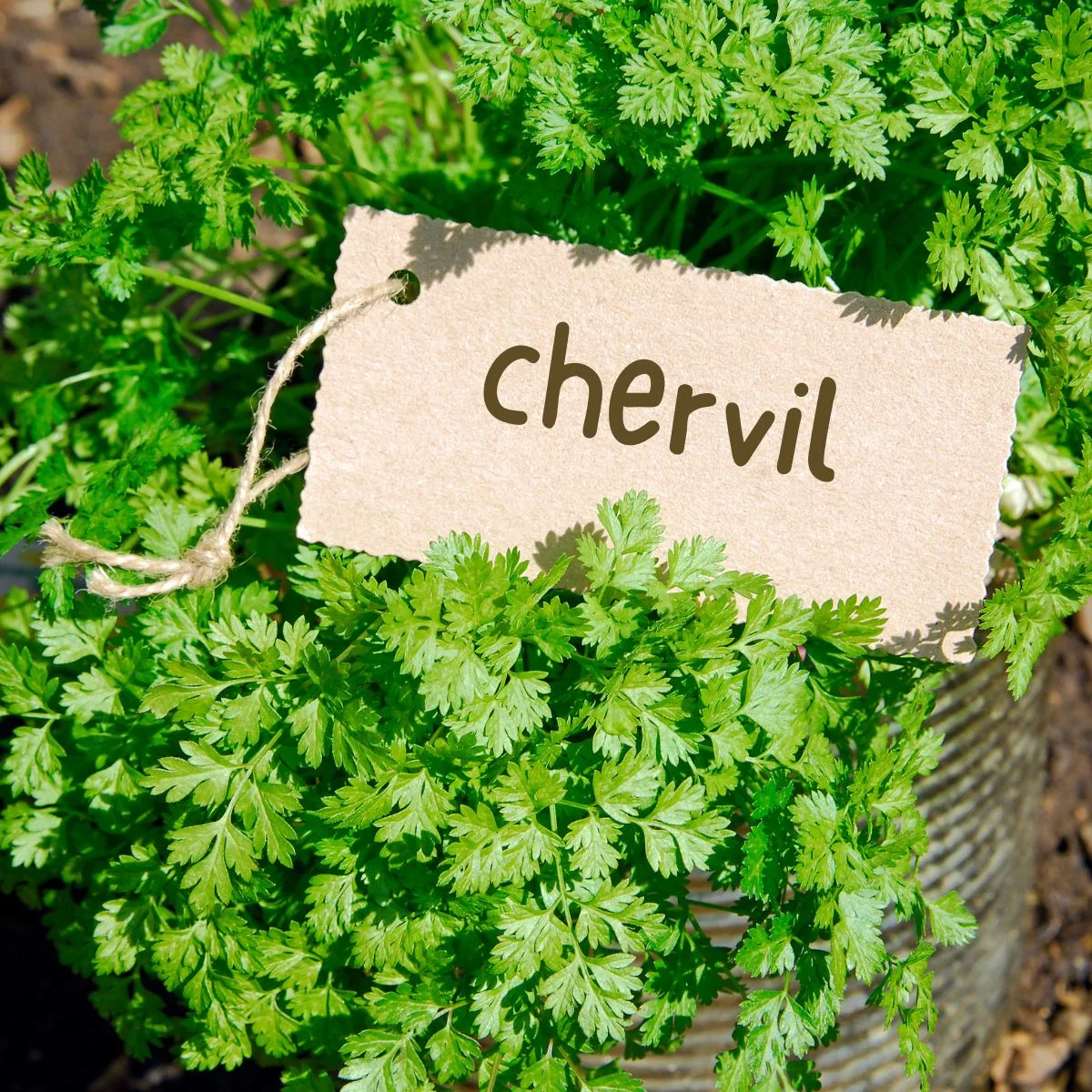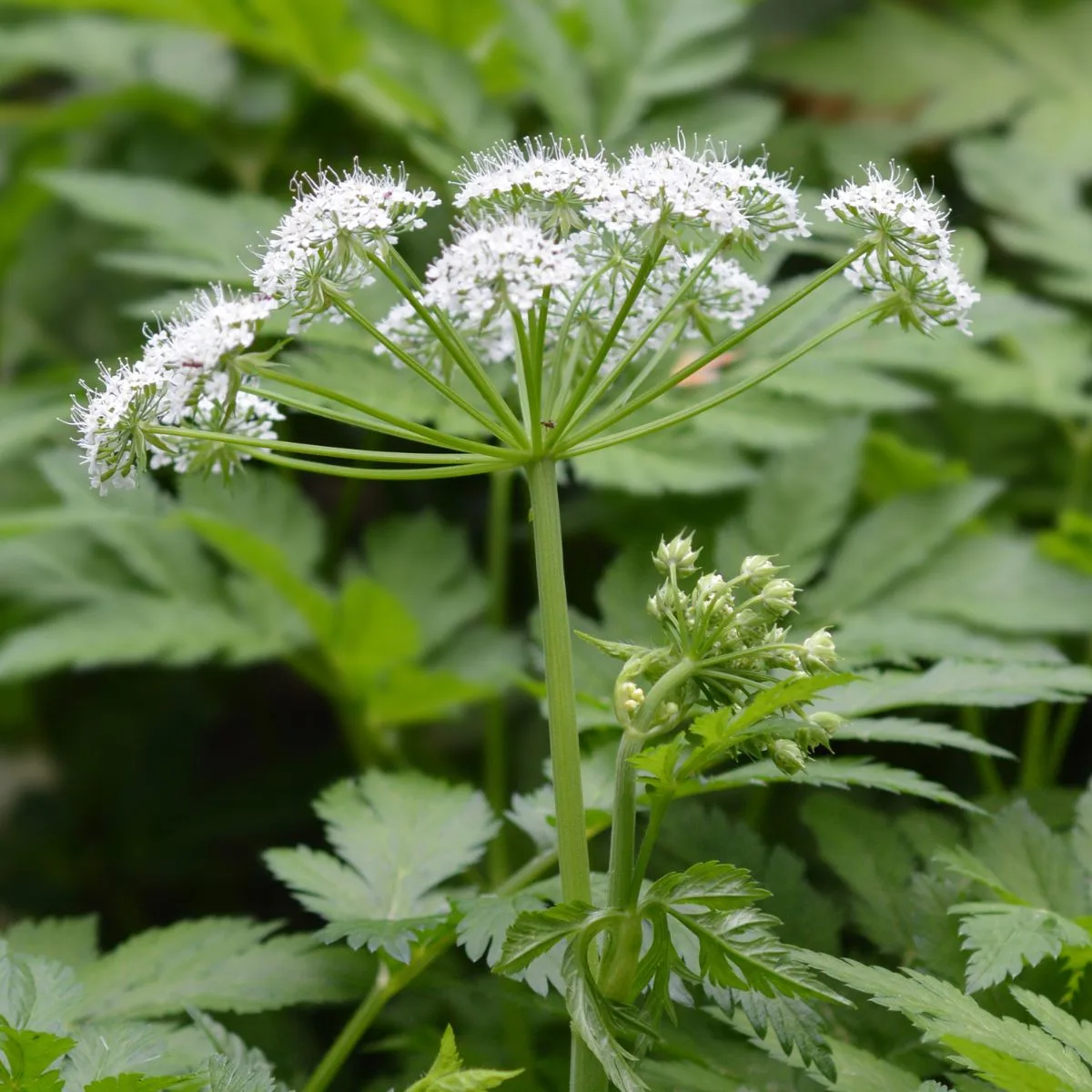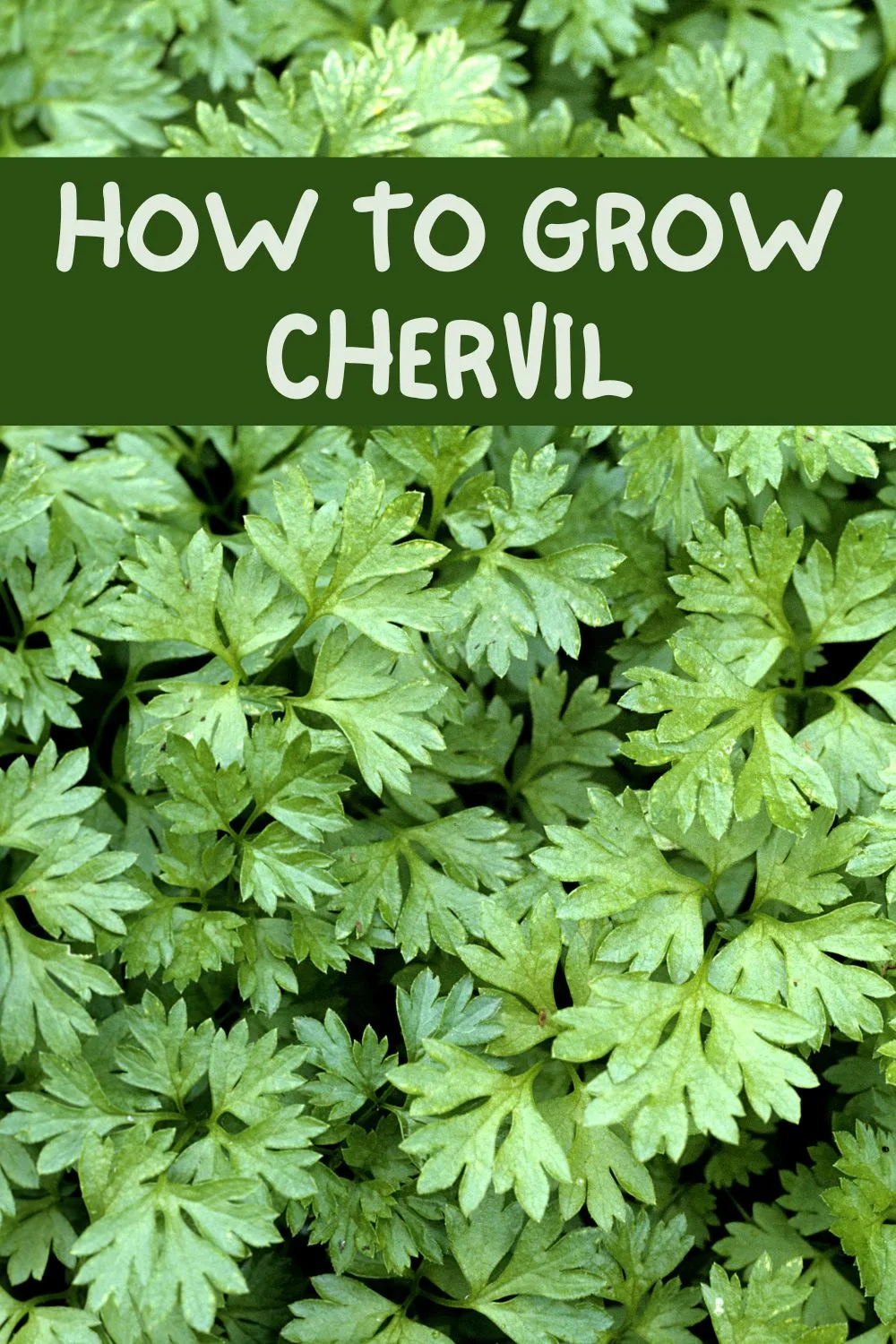When learning how to grow chervil, you’ll be happy to know it is fairly easy. This versatile herb grows well in USDA hardiness zones 4-9, thriving best in partial shade or full sun when provided with consistent moisture.

Chervil (Anthriscus cerefolium) is one of our most aromatic kitchen herbs. It can be harvested throughout the summer by sowing at regular intervals. An aromatic and tasty plant! Growing chervil is a great way to add a mild anise flavor to salads and soups, just as an example.
Chervil – A Tasty, Easy to Grow Herb
Chervil is an annual plant in the carrot family, the umbelliferae. It has feathery, parsley-like leaves and the white flowers grow in the shape of a parasol.
Chervil will grow in any garden soil in either sun or shade and will also thrive in tubs. Make sure to grow plenty – not only can Chervil be used as a salad or herb, but it can also replace parsley or Curly kale as a garnish.
It is considered one of France’s “fines herbes“, making fresh chervil a popular garnish, often called French parsley. For those looking to add a touch of finesse and sophistication to their cooking, chervil is the perfect herb. Chervil is an aromatic, delicate green herb that has an anise-like flavor with a hint of licorice.
Use chervil like parsley
Chervil is a versatile herb that is often overlooked in the culinary world. This mild, anise-flavored plant can be used in a variety of dishes, from soups to salads and everything in between. To maximize chervil’s flavor and aroma, it is best to use freshly cut leaves or stems. To do this, remove the leaves from the stem and store them in a damp paper towel at room temperature until you’re ready to use them.
Chervil is generally added as one of the last ingredients of a dish just before serving; it adds both flavor and color, making it perfect for salads, egg dishes, and lighter fare. Chervil can also be used as a garnish on top of cooked vegetables or meats. Regardless of how you decide to use chervil, its light lemony flavor will add an unexpected burst of brightness to your meal.
How to Grow Chervil
This versatile herb grows well in USDA hardiness zones 4-9, thriving best in partial shade or full sun when provided with consistent moisture. It likes moist soil with some organic matter as well, if possible.
When planting chervil from seed, start indoors four weeks before the last frost of the season and transfer outside once soil temperatures reach at least 45°F.
When transplanting chervil, ensure adequate spacing of 8 inches apart as the leaves become overly crowded when planted too close together. When chervil has reached about 6 inches in height, cut it back for fresh growth.

As temperatures increase in midsummer, chervil can be susceptible to hot weather wilting. If it’s in full sun, there might not be much you can do about it, other than let it bolt and then collect seeds to plant at the end of summer for a fall crop.
With its delicate flavor and small leaves that look beautiful when sprinkled over a meal in presentation, chervil is easy to grow and worth every effort! You can enjoy these fresh herbs any time you want.
No need to “ rotate”
Experience has shown that it is not necessary to rotate the chervil bed from year to year to obtain the best harvest. But, if you like to rotate your crops, spinach and chervil can be alternated each year.
Harvest immediately
Chervil should preferably be harvested before it begins to send up its flower-bearing stems since it does not taste as good once it has started to produce flowers. By sowing new seeds at regular intervals, enough chervil can be harvested for both immediate use and for storing in the freezer. There is no flavor loss in the freezing process.
Many excellent properties
Chervil grows wild in southern Europe and Western Asia and has been cultivated by man since the Middle Ages. It was once thought to have diuretic properties, to ensure healthy digestion and sound sleep, and to cure headaches. Now, it’s very popular in French cuisine and is making its way into American cooking, too.
Sow in the spring or fall
Chervil is a fast-growing herb. Seeds sown in early spring produce “table-ready” herbs after only 6 weeks and summer-sown chervil takes only four to five weeks. Plants sown later can be harvested over a longer period. They are less likely to flower and set seed at such a late point in the season as the days are too short.
Sow in rows
If you want lots of chervil, sow it in rows in a vegetable garden, and leave about 1 foot between the rows. The long seeds are not always easy to sew in straight lines. Sow at a little under one-inch depth in the spring and a little more, but not over 1 and 1/2 inches, at the height of summer.
Don’t forget to water it
If the weather is dry, water the ground thoroughly since this rapidly growing plant uses a lot of water. Also, over-dry plants tend to flower and go to seed early. Chervil is ready to harvest when it is about 6 inches tall before the stems have begun to elongate. Once this plant starts to flower, the leaves lose their taste. Chervil left to stand too long in the fall may produce leaves lacking in chlorophyll and the plants look pale and sick.
Pests and diseases
Not many pests or diseases will attack chervil, but there may be an occasional outbreak of aphids, although these can usually be washed away with the garden hose. If this doesn’t work, use an insecticide, but remember to use only those approved for use on edible plants. Carefully follow directions and wait the required length of time before eating the herb. This goes for all edible plants. Learn more about controlling aphids.
Towards the end of the season, you may notice that the leaves of your plant are losing color. Colorless leaves are leaves with no chlorophyll, and this phenomenon usually occurs if you waited too long to harvest.
How to Grow Chervil FAQ?
How big does chervil grow?
If you harvest it often, you can keep it to around 8″ to 10″, but chervil can easily become overgrown, growing up to 30 inches tall, with white flowers that come in clusters.
Can chervil be grown in pots?
Yes, chervil can easily be grown in pots and other containers.
Is chervil annual or perennial?
Chervil is actually a hardy biennial – it completes its life cycle over two growing seasons.


